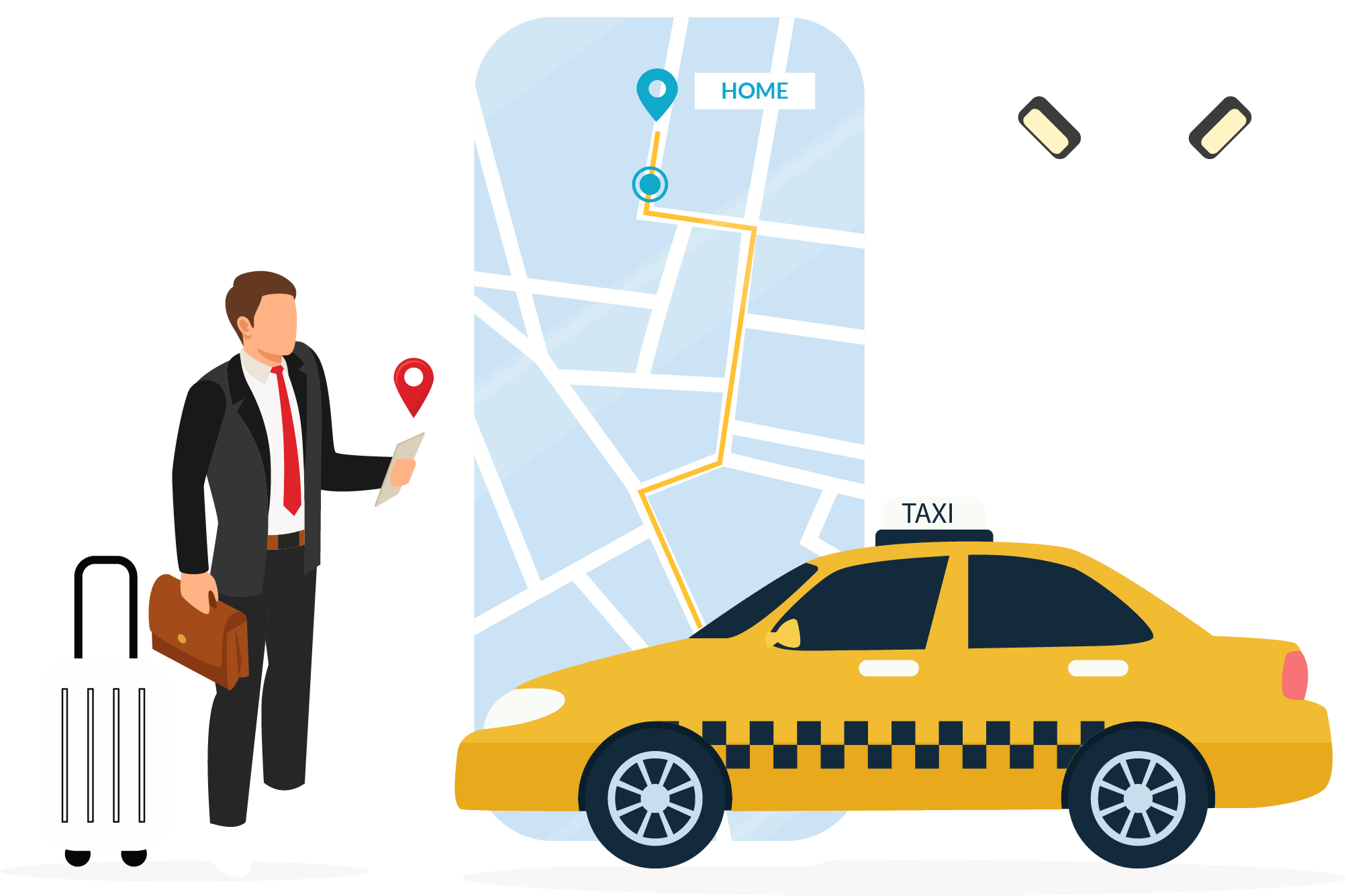
When we think about the advent of technology, lots of apps come to mind. But when we precisely look at the taxi or transportation industry – Uber is the first name that sets benchmarks in the taxi business.
Uber has set many success stories in the taxi industry. Still, it is marred by controversies. Today, modern customers trust booking cabs via apps more than individual drivers. This means a new first with the right settings. Strong market awareness can enjoy lucrative business opportunities in the Taxi business model.
If you are planning to establish a business or app like uber, but want to know how uber has impacted the transportation industry? Then, Keep scrolling through this blog.
How big is the taxi market?
Over the last decade, the taxi industry has grown massively. As of 2012, the total number of taxi cab drivers is 233,900 in the United States. Today, Uber is operating with 1 million drivers in the USA only, and it is estimated to reach 3-4 million drivers worldwide. If we check out Uber’s annual revenue, it was $0.4 billion in 2014 that will reach $11.1 billion in 2020.
The data reveals only Uber taxis or registered vehicles, but there are many small taxi drivers operating under small taxi business names.
Clearly, as you are planning to invest in the taxi business, it’s one of the growing industries providing great opportunities for budding entrepreneurs.
Has the taxi industry grown or decreased because of Uber?
It’s quite difficult to say at the moment whether Uber is responsible for the industry’s growth or not. Why? Some analysts exclude Uber from the traditional taxi industry. Therefore, it makes it difficult for anyone to draw a clear picture and understand where the growth has come.
But,
One thing is clear that Uber leads the industry with a unique business model that leads to increased competition for other taxi firms. Drivers now have to work harder than ever and approach customers with an innovative strategy. The rat race between Uber and mini-cab firms leads customers to enjoy competitive pricing strategies while sitting in the back seat.
Understand, How Uber has affected the taxi industry – The positives and negatives.
Uber will be one of the biggest tech giants in 2022. It has affected the industry in many ways. So, want to know the uber effects?
The ride-sharing business – Uber revolutionized the taxi industry. Whether someone is on busy city streets and needs a ride to go to another street corner, waving a taxi ride can let customers enjoy local car or bike ride service. It leads various freelancers to join the taxi business alongside full-time jobs.
On the other hand, the taxi dispatch software is based on the Demand and Supply concept of economics. The more the demand, the higher it will charge the fare. Therefore, it’s hard to predict fare charges and earnings during peak hours/season or bad weather, which affects the reliance of customers.
When it’s about raising questions on taxi and private rental vehicle disruption, platforms like Uber become a challenge for mini-cabs business. Therefore many similar companies are hoping to join successful platforms like uber.
Let’s discuss more how uber affects the taxi industry, both in positive and negative ways.
Positives:
- Uber’s success allows it to be more innovative and understand the effect of pollution on the environment. Therefore, the company recently unveiled the plan to enrol more electric cars or low-emission vehicles by 2025 for environmental safety.
- Uber’s app keeps the customer one step ahead of the traditional taxi business. While booking, customers can know about the driver, car number, and other essential details. Even the customers can know about the ride fare before booking to eliminate last-minute stress.
- Uber Drivers enjoy great earnings from the app. In countries like the USA and UK, drivers can enjoy higher earnings than a normal wage rate. The best thing, drivers can be the boss of their own business and get the liberty to enjoy anytime and income.
Negatives:
- Uber technology allows fare surges, which is a great trouble for customers, especially during peak hours and bad weather conditions. The price surge leads to impacting customers in a negative way.
- Uber is offering extremely low fares, which is making it hard for traditional cab owners to operate and compete in the market. As a result, they are losing customers and huge revenue.
- Uber’s pooling feature also has drawbacks. Many customers found it not to be safe while traveling, as it led to losing their personal space in the car and affecting their confidence while booking next time.
Are Uber’s Rules And Regulations The Same As Those of Taxi Firms?
Many believe Uber is a tech company. It’s true also to some extent as it’s a successful business model due to easy-to-use, fully-featured apps.
But on the same side, you cannot deny that it’s a taxi company which abides by similar regulations in the transportation industry. Some of them are
- Strict vehicle safety standards
- Licensing for vehicles
- Taxes
- Obtaining an Employer Identification Number
What else to say on – How Uber Has Changed the World!!!
One more category in the transportation system is left from the above discussion, which is public transportation. For this, it is undeniable that Uber has also changed the way we interact with the transportation system. Now, people’s travels are not limited to day or location.
Customers can travel anywhere and anytime without waiting in a long queue of buses and metros. Users can enjoy riding anytime and anywhere. Most importantly, its unique business model promotes independent workers to work beyond office hours. Most of them are earning above basic wage in a city or state.
From customers, uber has changed the way to interact with strangers. Young ones can travel in cabs without talking to strangers and reach home safely.
Finally, we can say, irrespective of the positive and negative effects of Uber on the transportation industry. It’s brighter side overweighting the other phase.


